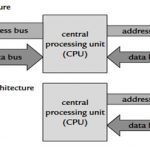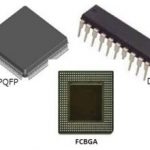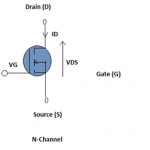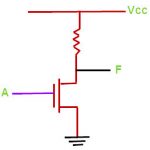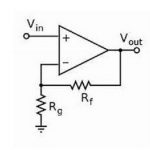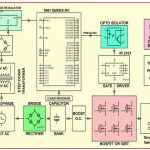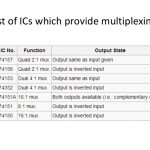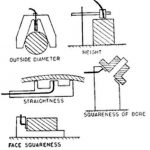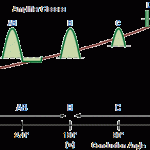In present days, the audio & video is totally digitized. When the audio signal is out of any audio source or microphone, then the analog will be sampled, coded, modulated, compressed & processed into the digital form like zero’s and one’s, so it is named DSP (Digital Signal Processing). The remaking of digital signal into the audio signal is done by digital signal processing. The architecture of traditional X86 is called “Von Neumann”, and it is not suitable for handling several algorit … [Read more...]
Difference Between Electronic Devices and Integrated Circuit
An electronic device is constructed as a single unit. Any circuit or a system can produce the desired output based on the input. Electronic devices and integrated circuits are the components for controlling the electrical current flow for the purpose of signal processing and system control. Before the invention of integrated circuits (ICs), all the individual electronic devices like the transistor, diodes were discrete in nature. All the individual electronic devices are called discrete … [Read more...]
Difference Between BJT and MOSFET
Both the BJT and the MOSFET come under the category of semiconductors. This type of devices produces large variations in the electrical signals due to the changes in the applied input signals. The transistors are the revolutionary devices; its invention in the 20th century has bought changes in the electronic systems. These also facilitate to act like switches as well as it can also be used in amplifiers. The basic type in the transistor that introduced earlier is BJT later MOSFET is introduced … [Read more...]
Difference Between CMOS and NMOS Technology
The most popular semiconductor technology (MOSFET technology) obtainable today is the CMOS technology. The term CMOS stands for complementary MOS technology. This is the most important semiconductor technology for ASICs, microprocessors, memories, etc. The main benefit of CMOS technology over NMOS and Bipolar technology is the power dissipation – when the circuit activates then only the power dissipates. This allows fitting several CMOS gates on an IC (integrated circuit) than in Bipolar & N … [Read more...]
Difference between Inverting and Non-Inverting Amplifiers
This article discusses the Difference between Inverting and non-inverting amplifiers - These are both amplifiers that are derived from the basic operational amplifiers (op-amps). The basic op-amp consists of two input terminals that are known as inverting and non-inverting. These terminals are represented by the sign minus and a plus sign. These op-amps are basically known for their differential characteristics. Hence these are good at performing mathematical operations such as addition, … [Read more...]
Types of MOSFET – Operation, Working & Applications
The MOSFET is an important element in embedded system design which is used to control the loads as per the requirement. Many of electronic projects developed using MOSFET such as light intensity control, motor control and max generator applications. The MOSFET is a high voltage controlling device provides some key features for circuit designers in terms of their overall performance. This article provides information about different types of MOSFET applications. … [Read more...]
What is Multiplexer and Types of Multiplexing Techniques
A Multiplexer is a device that allows one of several analog or digital input signals which are to be selected and transmits the input that is selected into a single medium. Multiplexer is also known as Data Selector. A multiplexer of 2n inputs has n select lines that will be used to select input line to send to the output. Multiplexer is abbreviated as Mux. MUX sends digital or analog signals at higher speed on a single line in one shared device. It recovers the separate signals at the … [Read more...]
What is a Comparator – Types & Its Working
Comparators are classified into various kinds, such as electronic, electrical, mechanical, optical, sigma, digital and pneumatic comparators, these are used in various applications. Comparators play an essential role in designing electrical and electronic projects. In electronic circuits, an op-amp is used with negative feedback and it can also be used as a comparator. The comparator is mainly designed without feedback for open loop configuration. These are widely used in A/D converters. When … [Read more...]
All about Amplifiers and their Workings
An amplifier is one of the most commonly used electronic devices in the world. It's a basic building block of a vast number of circuits, and comes in various forms. Amplifiers can be defined simply as an electronic device that increases the power of a signal. In other words, it increases the amplitude of a signal, and makes it stronger than the given input. Although this sounds simple in theory, amplifiers have a lot of parameters and conditions in the real world. Amplification is never … [Read more...]
Know about Klystron Amplifier Types with Applications
The term “Klystron amplifier” was designed by two brothers, namely Sigurd Varian and Russell at Stanford University.The prototype and the demonstration of this amplifier is finished successfully on 30th august 1937 and published in the year 1939. News of the klystron amplifier was influenced by the US and UK researchers which are working on radar device. These amplifiers are one type of microwave vacuum tubes which are used as an amplifiers in some radar devices as amplifiers. These amplifiers ma … [Read more...]
- « Previous Page
- 1
- …
- 15
- 16
- 17
- 18
- 19
- …
- 23
- Next Page »
